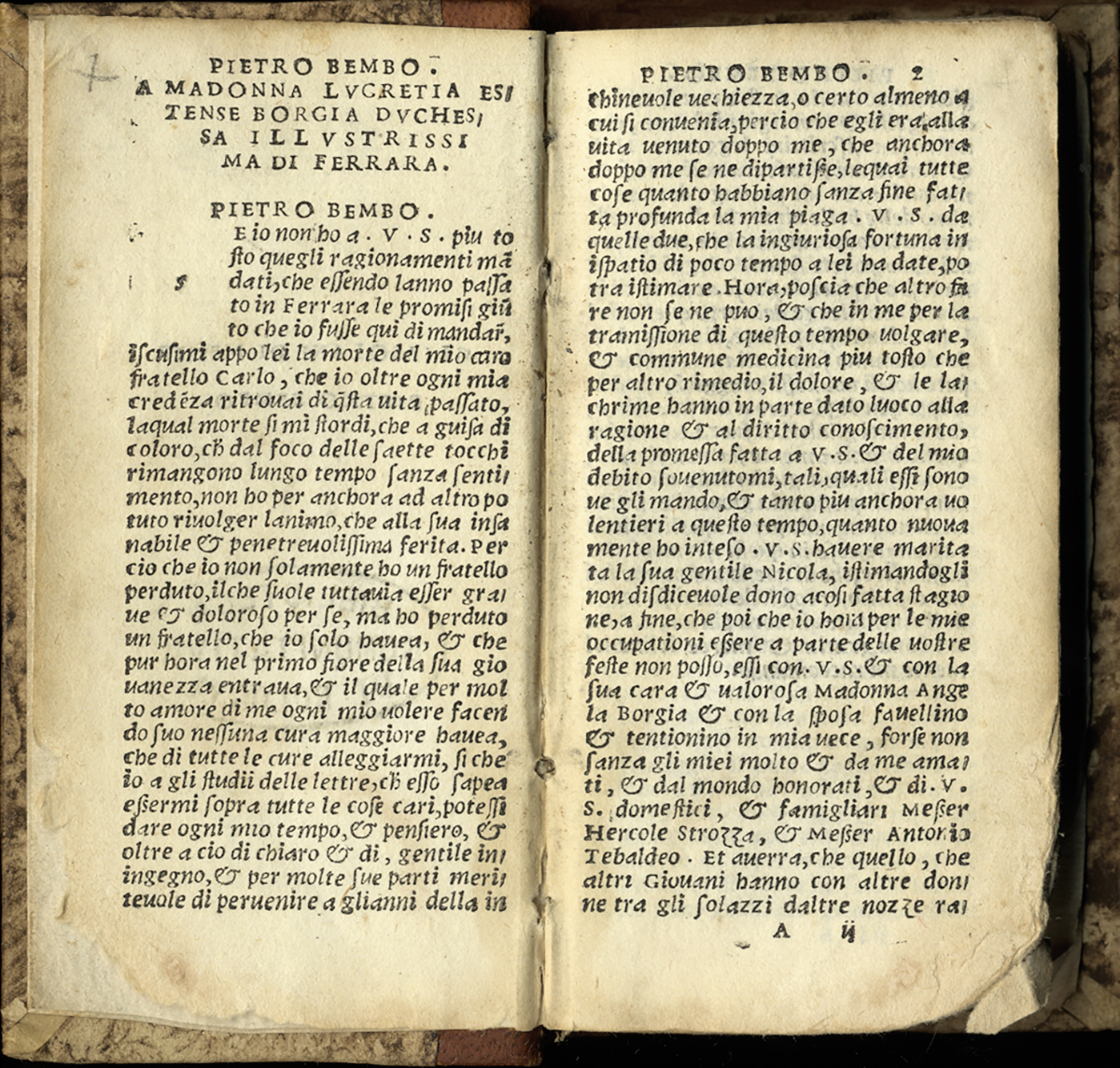
With 31 weights, including small caps, Old style figures, expert characters, and an alternate cap R, Bembo makes an excellent all-purpose font family. The heavier weights impart a look of conservative dependability to advertising and packaging projects. Because of their quiet presence and graceful stability, the lighter weights of Bembo are popular for book typography. The italic is based on letters cut by the Renaissance scribe Giovanni Tagliente.

They made a number of changes to the fifteenth-century letters to make the font more adaptable to machine composition. In 1929, Stanley Morison and the design staff at the Monotype Corporation used Griffo's roman as the model for a revival type design named Bembo. This type was designed by Francesco Griffo, a prolific punchcutter who was one of the first to depart from the heavier pen-drawn look of humanist calligraphy to develop the more stylized look we associate with roman types today. In 1496, he used a new roman typeface to print the book de Aetna, a travelogue by the popular writer Pietro Bembo. Bembo font family Designed by Monotype Design Studio in 1929 Francesco Griffo in 1495-1501.

The publications of Francesco Griffo's at Bologna as cited by Francesco Griffo da Bologna: Fragments & glimpses: a compendium of information & opinions about his life and work. Typefaces based on his work include Monotype Poliphilus roman, Bembo Book roman, Bembo *ling, Morris Fuller Benton's Cloister Old Style italic, Jack Yan's JY Aetna roman, Bitstream Aldine 401 roman, and Franko Luin's Griffo Cl*ico roman and italic more distant descendants include the romans of Claude Garamond, Giovanni Mardersteig's Dante, Robert Slimbach's Minion and Matthew Carter's Yale Typeface. This more personal form of type became widely popular in Europe. The italic type was designed to look like handwriting of the humanist scholars. Griffo’s design is considered one of the first of the old style typefaces, which include Garamond, that were used as staple text types in Europe for two hundred. Meggs wrote in A History of Graphic Design, "Griffo researched pre-Caroline scripts to produce a roman type that was less artistic but more authentic than Jenson's designs". Bembo was modeled on typefaces cut by Francesco Griffo for Aldus Manutius’ printing of De Aetna in 1495 in Venice, a book by classicist Pietro Bembo about his visit to Mount Etna. His Romans show a degree of abstraction from calligraphy not present in the work of the earlier master Nicolas Jenson, while his italic and Greek types are notably cursive. Despite Griffo’s ingenuity, it was Manutius whose star continued to rise. He called it Italic type, after the name of his homeland. Griffo's typefaces have been very influential. The Typeface is based heavily on the font used in Pietro Bembo’s De Ætna, an esoteric Venetian manuscript printed in 1495. This is his last appearance in the historical record. In 1518 Griffo was charged with the murder of his son-in-law, who had been beaten to death with an iron bar. In 1516 he returned to Bologna where he began print publishing. It was with Soncino that Griffo's second italic type was cut in 1503. Griffo then went to work for Gershom Soncino, whose family were Hebrew printers. Bembo font italic is based upon function a calligrapher who worked for a printer while at the 1520s, by Giovanni Antonio Tagliente after the time of Griffo along with Manutius. Bembo is the first famous product for Pietro Bembo. However, as Manutius had achieved a monopoly on italic printing and Greek publishing with the permission of the Venetian government, he had a falling-out with Griffo. Bembo truly is part of one’sold-style of serif fonts, even having it’s ordinary or Roman-style according to a design piece all close to 1495 from Francesco Griffo for Venetian printer Aldus Manutius. Aldus gives Griffo credit in the introduction of the Virgil of 1501. He cut Roman, Greek, Hebrew and first italic type. He worked for Aldus Manutius, designing the printer's more important humanist typefaces, including the first italic type. Francesco Griffo (1450–1518), also called Francesco da Bologna, was a fifteenth-century Italian punchcutter.


 0 kommentar(er)
0 kommentar(er)
